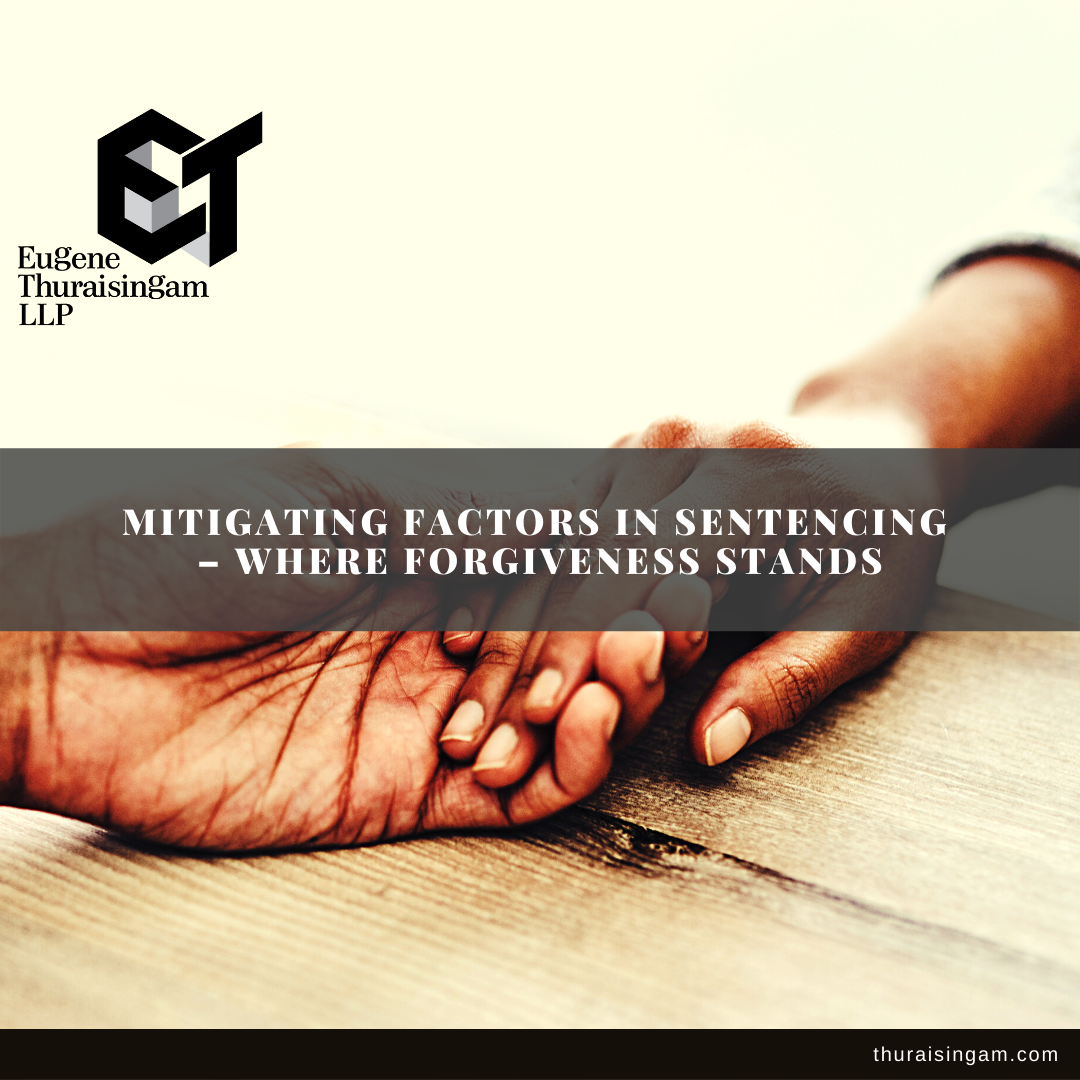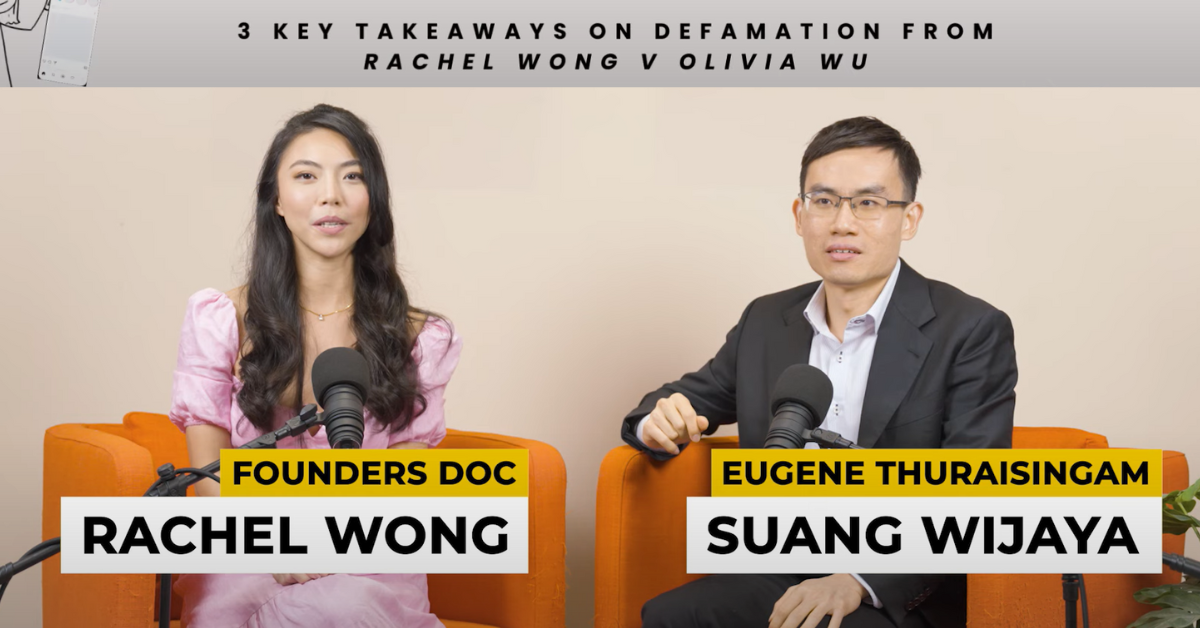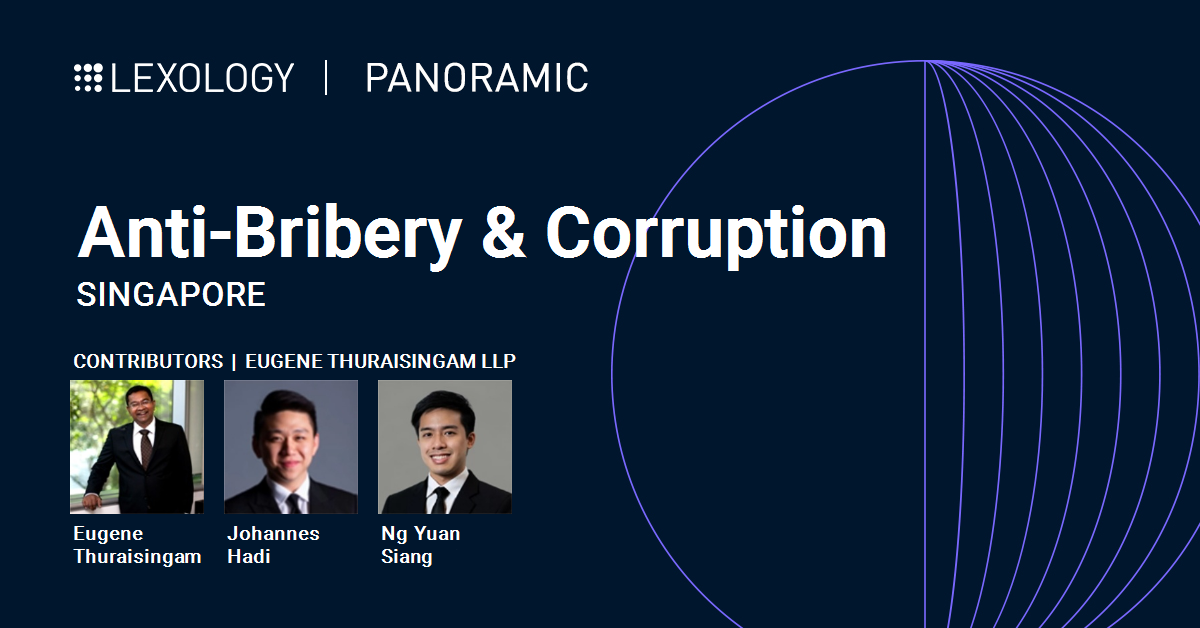Mitigating factors in sentencing – where forgiveness stands
Public Prosecutor v Tan Jia Jun Shawn [2022] SGHC 76
Forgiveness is often a crucial part of a victim’s healing process, allowing them to move beyond the harm caused by an offender against them. Where, then, does forgiveness come in when it comes to determining the appropriate sentence to impose on an offender? This question has surfaced occasionally over the years in both Singaporean and English jurisprudence. In Public Prosecutor v Tan Jia Jun Shawn [2022] SGHC 76 (“Shawn Tan”), the High Court revisits this question, providing a timely summary of the role of forgiveness in a mitigation plea.
1. Facts
Shawn Tan was an appeal by the Public Prosecutor to the High Court against the sentence of a fine imposed on the eponymous respondent (“Tan”). In the Magistrate Court, Tan pleaded guilty to one charge of voluntarily causing grievous hurt, under s 323 of the Penal Code (Cap 224, 2008 Rev Ed) and was sentenced to a fine of $3,500 in default two weeks’ imprisonment.1
At the time of the incident, Tan was in a romantic relationship with the Victim. The couple found out that the Victim was about nine weeks’ pregnant. They were advised by a doctor to decide within the week whether to proceed with the pregnancy or opt for an abortion, due to the risk of medical complications. A few days later, the couple’s discussion about what to do with the pregnancy turned into a heated argument. During this argument, Tan became physical, pushing the Victim onto his bed and hitting her multiple times. The Victim suffered redness and tenderness on her face, chest and spine, as well as bruises on her arms and legs. Though there was a possibility that she suffered a facial fracture, this was not confirmed. No radiograph was done due to the possible risk of radiation to the foetus.2
Most relevant to the present article is the fact that in arriving at the sentence of a $3,500 fine in default two weeks’ imprisonment, the learned District Judge relied heavily on a letter written by the Victim providing not only that she had forgiven Tan, but that she had agreed to marry him.3 She found that her letter was a strong indication of the Victim’s faith in Tan, and that since the Victim was planning for a future together with Tan, the Court should be mindful that any sentence imposed would impact her as well.4
In the Prosecution’s appeal, they argued, inter alia, that the learned District Judge had placed undue weight on the Victim’s forgiveness of Tan. They sought for a sentence of two weeks’ imprisonment instead.5 The High Court found that forgiveness did not apply as a mitigating factor in the present case. The Prosecution’s appeal was allowed, and Tan’s sentence of a fine of $3,500 in default two weeks’ imprisonment was set aside and substituted with a sentence of two weeks’ imprisonment.6
2. Forgiveness in an offender’s mitigation plea
The legal position on the scope of forgiveness in an offender’s mitigation plea has not changed very much over the years. The High Court in Shawn Tan followed the Court of Appeal’s pronouncements in PP v UI [2008] 4 SLR(R) 500 (“UI”), that forgiveness has little place in criminal law as it bears no relation to the liability for punishment, except in two exceptional situations:-
- situations where the sentence imposed on the offender would aggravate the victim’s distress; and
- situations where the victim’s forgiveness provided evidence that his or her psychological and/or mental suffering as a result of the offender’s criminal conduct must be very much less than would normally be the case.7
Our Courts’ attitude to forgiveness appears to have a few conceptual and precedential bases. The Court of Appeal in UI expressed their approval of the conceptualisation of forgiveness as an internal change in a victim, more of an attitude than an act. Under a restorative criminal justice system that seeks to restore the relationship between a victim and an offender, forgiveness in this sense would have been a significant factor. However, the Singapore criminal justice system is not one where restorative justice plays a huge role.8The four pillars of sentencing under Singapore’s criminal justice system are deterrence, retribution, prevention and rehabilitation.9
English criminal law itself was once restorative, before the days of William the Conqueror. It had long shifted from those ideals by the time it arrived at our shores.10 In a system such as ours, a victim’s forgiveness of an offence does not generally influence the Court’s sentence – our Courts do not usually enhance a sentence on the basis that a victim is particularly unforgiving or vindictive, and conversely our Courts do not usually reduce a sentence because a victim is forgiving.11
This is save for the two exceptional situations mentioned above.
The first exception
The first exception was considered in the English Court of Appeal decision in R v Adam John Nunn [1996] 2 Cr App R (S) 136, which concerned a young man who had caused his best friend’s death by dangerous driving. The family of the victim gave numerous letters to the effect that the length of the sentence imposed on the accused made it more difficult for them to come to terms with the victim’s death. Judge J found that the sentence of four years’ imprisonment was causing the victim’s family additional grief, and reduced the sentence to three years’ imprisonment.12
In the present case, the Court below found that this exception applied – the Victim was looking to plan a future together with Tan, so any potential sentence would affect the Victim insofar as it would affect those future plans.13
The High Court disagreed with this finding. It found instead that there was insufficient evidence to prove that the Victim’s distress would be aggravated by a custodial term of two weeks. There was also no clear indication that this was what the Victim meant in her letter:-
- First, any negative impact suffered by the Victim was framed in tentative terms;
- Second, the Victim did not explain why a short custodial sentence, in particular, would have aggravated her distress;
- Third, the Victim herself acknowledged that Tan had broke the law and that she did not believe Tan should go unpunished.14
It could be argued that forgiveness is not actually operative here – the Court’s focus is on a question of fact –whether a potential sentence will affect a victim adversely or not, that does not necessarily hinge on whether the victim claims to have forgiven the accused. In fact, there are cases that proceed on a very similar line of reasoning that have nothing to do with forgiveness. In R v Smith-Bryant (1989) 11 Cr. App. R. (S.) 49, a woman who caused grievous bodily harm to a young man who raped her daughter had her sentence reduced on the basis that the daughter, the original victim of the young man’s offence, was adversely affected by the mother’s sentence.15
The second exception
The second exception originates from the English Court of Appeal decision in R v James Kevin Hutchinson (1994) 15 Cr App R (S) 134. Under this exception, forgiveness is used as evidence of the harm (or lack thereof) caused to the victim. While the Court of Appeal in UI found that this exception existed in Singapore law, it was also careful to note that, following English law, this would only apply to a “limited range of offences”. Exactly what is part of this limited range is unclear, but we know from UI that the rape of young girl falls outside this range.16
In Shawn Tan, the High Court found that the offence committed in the present case also fell outside that limited range, and that public interest required that Tan be punished in a manner commensurate with the seriousness of his criminal conduct.17
The statement that Tan’s offence falls outside the “limited range of offences” can be taken at several levels of abstraction. The High Court can be interpreted as saying that it is the particular combination of factors in the present case that takes it out of the limited range. Alternatively, it could be saying that the offence of voluntarily causing hurt in the context of domestic abuse takes it out of that range. This statement may be interpreted in several ways, some less tenuous than others.
Leaving that aside, the fact remains that the exact contents of this “limited range of offences” remain unclear. While we know that the rape of a young girl and Tan’s offence in Shawn Tan fall outside of it, there is otherwise not a lot of guidance on what exactly falls within that range. We expect there to be further developments in the case law in this area in the future.
3. Conclusion
Ultimately, although criminal law has moved far beyond the centuries-old ideals of restorative justice, the exceptions laid out in UI seem to represent a vestige where the well-being of those immediately affected by an offence is emphasised. There is, however, not a lot of room where a victim’s forgiveness can come into play. Even on the very little ground it does, it appears very much secondary to the interests of the public, only coming into play when those public interests are not a concern. In Shawn Tan, despite the Victim’s “impassioned plea” and attempts to drop the charges,18 the High Court found that the paramount sentencing consideration of general deterrence in situations of unprovoked violence against vulnerable victims was not displaced.19
Footnotes
- Public Prosecutor v Tan Jia Jun Shawn [2022] SGHC 76 at [2]-[3].
- Public Prosecutor v Tan Jia Jun Shawn [2022] SGHC 76 at [4]-[5].
- Public Prosecutor v Tan Jia Jun Shawn [2021] SGMC 87 at [26].
- Public Prosecutor v Tan Jia Jun Shawn [2021] SGMC 87 at [34]-[35].
- Public Prosecutor v Tan Jia Jun Shawn [2022] SGHC 76 at [10].
- Public Prosecutor v Tan Jia Jun Shawn [2022] SGHC 76 at [48].
- PP v UI [2008] 4 SLR(R) 500 at [48], [57].
- Public Prosecutor v Tan Jia Jun Shawn [2022] SGHC 76 at [1].
- Public Prosecutor v Law Aik Meng [2007] 2 SLR(R) 814 at [17].
- PP
v UI [2008] 4 SLR
- Causing death by dangerous driving – relevance of attitude of relatives of deceased to sentence Crim. L.R. 1996, Mar, 210-212 at 211.
- PP v UI [2008] 4 SLR(R) 500 at [58].
- Public Prosecutor v Tan Jia Jun Shawn [2021] SGMC 87 at [34].
- Public Prosecutor v Tan Jia Jun Shawn [2022] SGHC 76 at [42].
- Causing death by dangerous driving – relevance of attitude of relatives of deceased to sentence Crim. L.R. 1996, Mar, 210-212 at 212.
- PP v UI [2008] 4 SLR(R) 500 at [60].
- Public Prosecutor v Tan Jia Jun Shawn [2022] SGHC 76 at [44].
- Public Prosecutor v Tan Jia Jun Shawn [2021] SGMC 87 at [32].
- Public Prosecutor v Tan Jia Jun Shawn [2022] SGHC 76 at [19].






